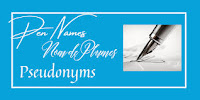
Rose O'Neal Greenhow
Two of the most notable female spies of the Civil War were Rose O'Neal Greenhow and Elizabeth Van Lew.
A girl from a small farm in Maryland, Rose Greenhow moved to Washington, D.C. when she was either 13 or 14 years old. After marrying Dr. Robert Greenhow, a federal librarian and translator in 1835, she was accepted into high society, even socializing with First Lady Dolley Madison.
When Robert died in 1854, Rose bought a house four blocks north of the White House. She became a leading socialite, maintaining alliances with Southern Democrats and Northern Republicans. Her influence even reached to the White House, helping James Buchanan get elected president in 1856.
She always considered herself a "Southern Woman," and in the spring of 1861 she became a Confederate Spy. Rose heard that the Union Army was planning an advance on Manassas, Va through the chairperson on the Senate Military Affairs Committee. Rose recruited Bettie Duvall a young woman with Confederate sympathies, to help her warn the Southern troops by hiding a cipher in Duvall's hair. Duvall snuck out of Washington dressed as a farm girl, and took the secret message to the Confederate Army. The First Battle of Manassas was a Confederate victory due to Greenhow's information.
Soon, 48 women and 2 men in several states were involved in Greenhow's spy ring. They used a sophisticated cipher, coding and decoding messages. Unfortunately, Rose Greenhow was careless when it came to storing the confidential information, keeping maps and other documents in her home. Allen Pinkerton, the head of the Union Intelligence Service and the founder of America's first detective agency in Chicago, was sent to monitor Rose. Seeing a clandestine meeting between Rose and a Union Soldier, he reported it and the War Department stepped in. Her house was searched and a map of Union fortifications and other incriminating documents were found. She was placed under house arrest, and in the following weeks other suspected spies were imprisoned in Rose's home.
Even then, she continued communicating with members of her network, waving different colored handkerchiefs from the windows and smuggling notes in and out of her house. She was moved to the Old Capitol Prison but continued to be a nuisance. The Union government never brought her to trial fearing Rose would either expose governmental secrets or cause mockery of government officials, and she was released on May 31, 1862. Told not to leave Confederate borders, she defied the Federal orders, sailing to France and England to raise support and funds. While in England, she became engaged to the 2nd Earl of Granville, writing her memoir about her imprisonment.
On the return trip, Rose's ship ran aground near Wilmington, North Carolina. When Rose and two other Confedeerate agents tried to reach the shore in a rowboat, they capsized and Rose Greenhow drowned, weighed down by the two thousand dollars worth of gold she was carrying for the Confederacy.
 |
| Elizabeth Van Lew |
Both Elizabeth and her mother were active in Richmond's high society, while practicing "multiple methods of giving their slaves independence and financial autonomy." One of their slaves, an African American girl named "Mary Jane" was baptized in their home church, sent to Princeton, NJ for an education, and spent 5 years in Liberia as a missionary, courtesy of the Van Lew's.
Elizabeth and her mother had to walk a fine line between maintaining their position in high-class society and their more radical politics of abolition, especially when war broke out. Both women convinced General John H. Winder to allow them to bring food and provisions to the captive Union soldiers in Libby Prison, on the outskirts of Richmond. Under the guise of "female benevolence," they passed messages back and forth from the prison, managed to find prisoners extra food and water, and helped prisoners escape, at great monetary and social expense to themselves.
In order to divert suspicion from their activities, Elizabeth and her mother staged public outings where they could be seen helping Confederate soldiers and even had the Confederate prison warden living in their home.
General Benjamin Butler heard about Elizabeth's activities and in December 1863, he recruited her as a spy for the Union Army. During the war, her spy network of 12 people, both black and white, helped her collect information from the Confederates. In March 1864, two Union officers attempted a raid on Libby Prison to free the prisoners. One of the officers was killed in the ill-fated campaign and his body was hung on display then secretly buried. Elizabeth used her spy ring to locate the secret burial, recover the officer's body, and rebury it in a safe location so it could be given to his family after the war.
Elizabeth's activities throughout the war got her acknowledgement from General U.S. Grant and a small stipend for her efforts. But it didn't cover the costs she accrued during the war, and she never recovered her social standing. She was labeled a "traitor," "crazy," and "mad" by the high society she used to associate with.
After the war, she became Postmaster of Richmond during Grant's presidency. She hired many African Americans and women to posts.
When she died in 1900 at the age of 82, she left behind a legacy as an effective spy and a significant asset to the Union Army.
Resources used: nps.gov, battlefields.org
The post "Women in Wartime: American Civil War Spies" appeared first on sandinourshorts.blogspot.com










